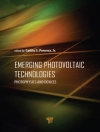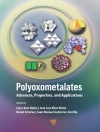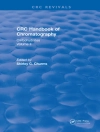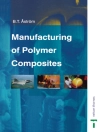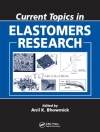This volume focuses on recent developments and advances of ceramics and ceramic matrix composites for use in fission and fusion reactors, nuclear fuels and alternative energy applications. With the continued increasing demands for energy, nuclear energy has experienced a renewed interest. Recent developments associated with advanced fuel cycles have resulted in new research efforts on nuclear fuel materials. The effects of radiation on the properties of ceramics and ceramic matrix composites are also addressed.
Inhoudsopgave
Preface.
Introduction.
Irradiation Effects in Ceramics.
(Genl V) Next Generation Nuclear Power and Requirements for
Standards, Codes and Data Bases for Ceramic Matrix Composites
(Michael G. Jenkins, Edgar Lara-Curzio, and William E. Windes).
Determination of Promising Inert Matrix Fuel Compounds (C. R.
Stanek, J. A. Valdez, K. E. Sickafus, K. J. Mc Clellan, and R. W.
Grimes).
Densification Mechanism and Microstructural Evolution of Sic
Matrix in Nl TE Process (Kazuya Shimoda, Joon-Soon Park, Tatsuya
Hinoki, and Akira Kohyama).
Optimization of Sintering Parameters for Nitride Transmutation
Fuels (John T. Dunwoody, Christopher R. Stanek, Kenneth J.
Mc Clellan, Stewart L. Voit, Thomas Hartmann, Kirk Wheeler, Manuel
Parra, and Pedro D. Peralta).
Ceramics in Non-Thermal Plasma Discharges for Hydrogen
Generation (R. Vintila, G. Mendoza-Suarez, J. A. Kozinski, and
R. A. L. Drew).
Piezoelectric Ceramic Fiber Composites for Energy Harvesting to
Power Electronic Components (Richard Cass, Farhad Mohammadi, and
Stephen Leschin).
Design Factor Using a Si C/Si C Composites for Core Component of
Gas Cooled Fast Reactor. I: Hoop Stress (Jae-Kwang Lee and Masayuki
Naganuma).
Characterizations of Ti, Si C, as Candidate for the Structural
Materials of High Temperature Reactors (Fabienne Audubert,
Guillaume Abrivard, and Christophe Tallaron).
Influence of Specimen Type and Loading Configuration on the
Fracture Strength of Sic Layer in Coated Particle Fuel (T. S. Byun,
S. G. Hong, L. L. Snead, and Y. Katoh).
Investigation of Aluminides as Potential Matrix Materials for
Inert Matrix Nuclear Fuels (Darrin D. Byler, Kenneth J. Mc Clellan,
James A. Valdez, Pedro D. Peralta, and Kirk Wheeler).
Fluidised Bed Chemical Vapour Deposition of Pyrolytic Carbon (E.
Lopez Honorato, P. Xiao, G. Marsh, and T. Abram).
Ceramics for Advanced Nuclear and Alternative Energy
Applications.
Strength Testing of Monolithic and Duplex Silicon Carbide
Cylinders in Support of Use as Nuclear Fuel Cladding (Denwood F.
Ross, Jr. and William R. Hendrich).
Subcritical Crack Growth in Hi-Nicalon Type-S Fiber CVI-Si C/Si C
Composites (Charles H. Henager, Jr.).
Electrical Conductivity of Proton Conductive Ceramics Under
Reactor Irradiation (Tatsuo Shikama, Bun Tsuchiya, Shinji Nagata,
and Kentaro Toh).
The Effects of Irradiation-Induced Swelling of Constituents on
Mechanical Properties of Advanced Si CISi C Composites (Kazumi Ozawa,
Takashi Nozawa, and Tatsuya Hinoki, and Akira Kohyama).
Behaviors of Radioluminescence of Optical Ceramics for Nuclear
Applications (T. Shikama, S. Nagata, K. Toh, 6. Tsuchiya, and A.
lnouye).
Author Index.
Over de auteur
Andrew A. Wereszczak received his Ph.D. in Materials Science
& Engineering from the University of Delaware in 1992, and
while his research is varied, the study and interpretation of the
relationship between mechanical properties and microstructure (of
monolithic ceramics, structural materials, and electronic
materials) are common denominators. Micromechanical
characterization of structural and armor ceramics using
instrumented static and dynamic indentation (e.g., Hertzian) with
acoustic emission analysis, and adapting those measured
performances and damage mechanism analyses to strength, rolling
contact fatigue, wear, machining, and ballistic performances is a
primary objective.
Additionally, ceramic strength and fatigue testing, ceramic
fractographical and flaw population analyses, Weibull analysis
strength-size-scaling, and probabilistic life prediction and design
of structural ceramic components constitutive another primary
research objective. In support of all these efforts, both
conventional and microstructural-level finite element stress
analyses and microstructure characterization are performed. He is
the author or co-author of over 100 technical publications and has
given over 80 presentations, and is the co-developer of
µ-FEA software.


